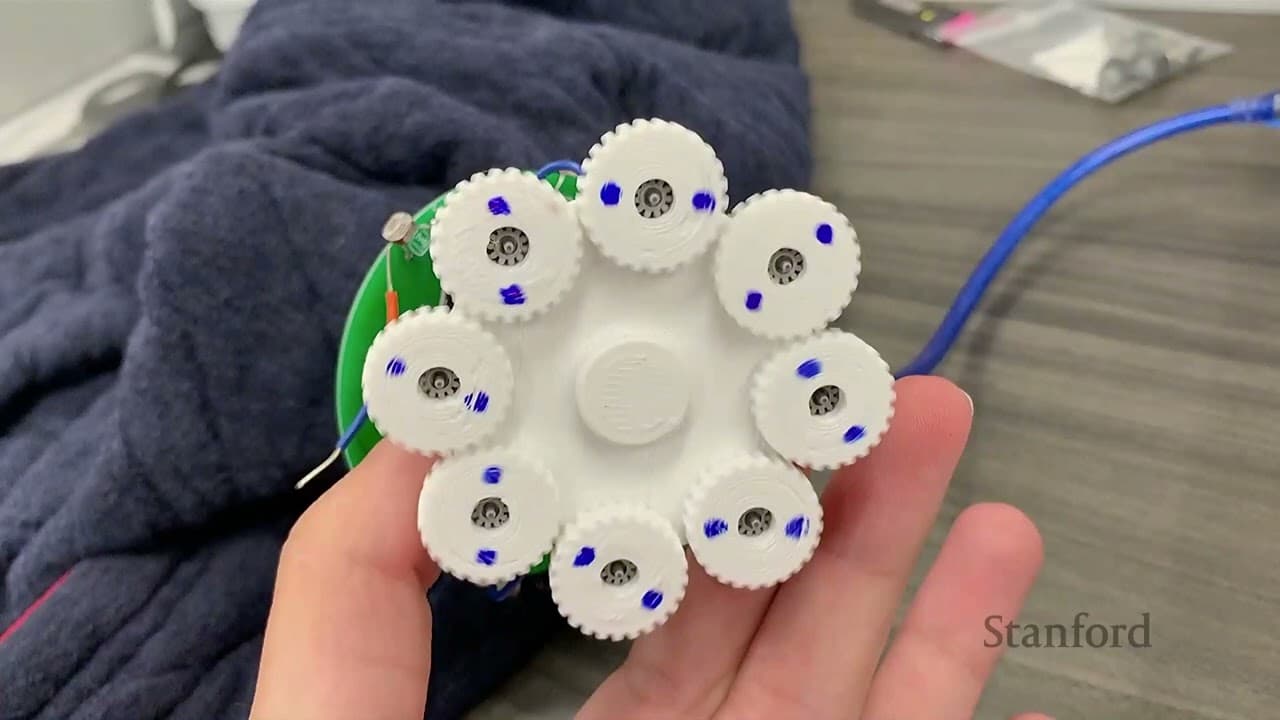Stanford Seminar - Engineering physical principles of embryonic morphogenesis in robotic collectives
14 May 2024 (over 1 year ago)

Morphogenesis in Robots
- Morphogenesis is the process by which an embryo changes shape by rearranging its cells.
- Current collective robots can change shape but are limited to perimeter motions.
- The goal is to create a robot that can rearrange its cells in a tight-packed situation throughout the material.
- The basic way to rearrange the topology of cells is called the T1 transition or intercalation.
Design Challenges
- Creating surface flows similar to cells.
- Adhesion between cells.
- Polarizing the robots so they know which direction to elongate.
Robot Design
- The final design of the robots included a custom circuit board, cheap motors, batteries, gears, and sensors.
- To create surface flows, the team used gears driven by motors along the surface of the robot.
- For adhesion, magnets were embedded in the robots and allowed to rotate to match the orientation of neighboring robots.
- To polarize the robots, polarized light was used. Each robot had photodiodes with polarized film on top, and a second polarized film was placed above the arena.
Experiments and Observations
- The robots were able to successfully perform T1 transitions when the polarized light was shone on them.
- The researchers conducted experiments to understand how the shape and strength of a collective of robots change in response to different parameters.
- They observed a sharp threshold in the force required for motion, both when varying the average force and the amplitude of fluctuations.
- The researchers found that as the amplitude of fluctuations increases, the average force required for motion decreases.
- A steep bimodal distribution of force pulses is most effective for shape change.
Robot Capabilities
- The robots can be turned on and off, and their stiffness and strength can be controlled by varying the inter-unit force and vibrations.
- The power consumption of the robots is reduced when they are fluctuating, but the energy required is similar.
- The robots can be controlled collectively, and they can rearrange themselves and change shape in response to light stimuli.
- The collective of robots can be turned into a viscoelastic material that can be deformed and reshaped.
- The robots can exhibit spatial control, where one side of the collective can be fluctuating while the other side is not.
Potential Applications
- Soft robotics
- Self-healing materials
- Programmable matter
Challenges and Future Research
- Scaling down the size of the robots
- Enabling 3D motion
- Incorporating distributed computation and communication capabilities